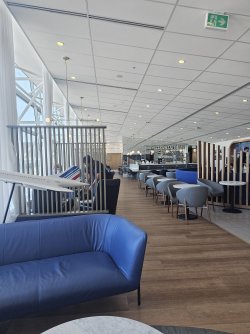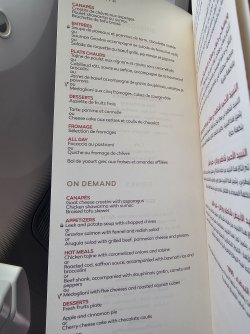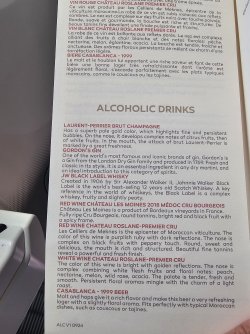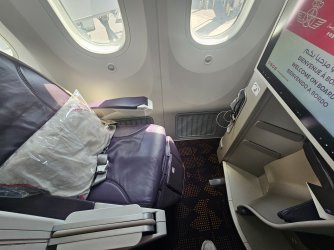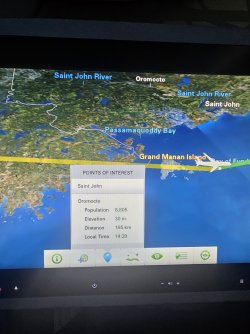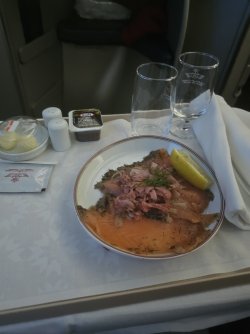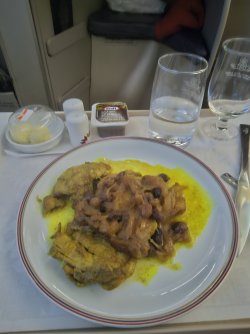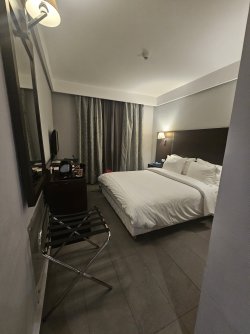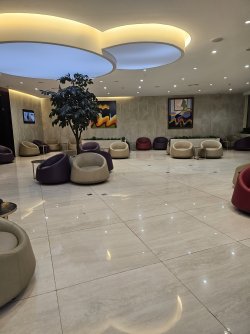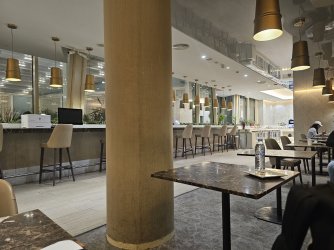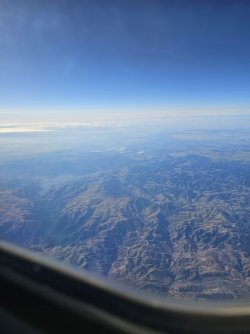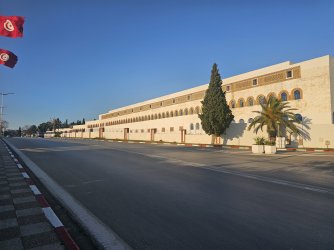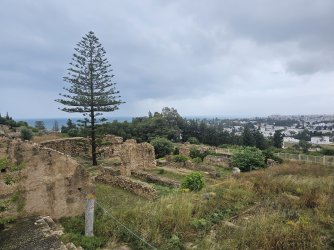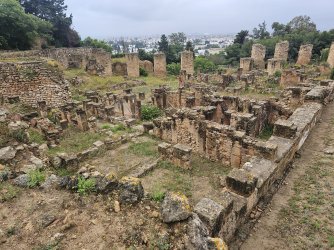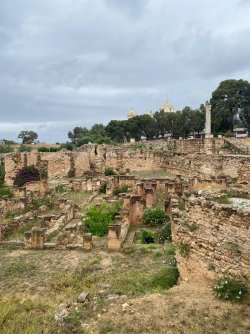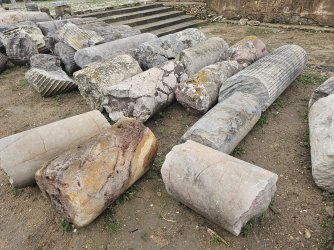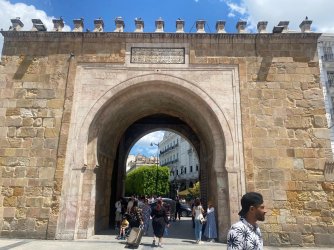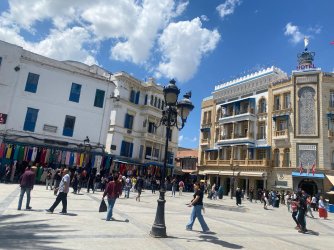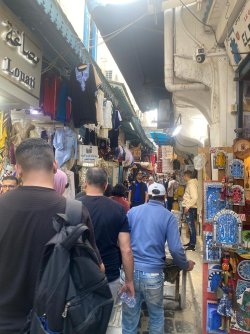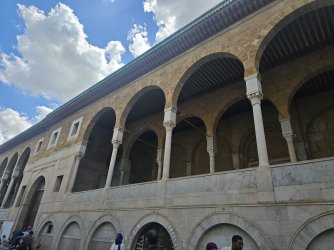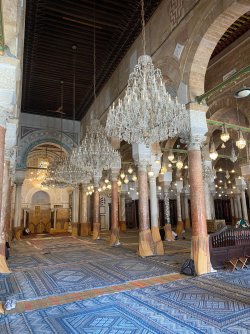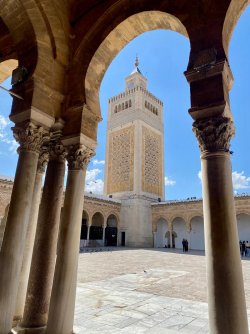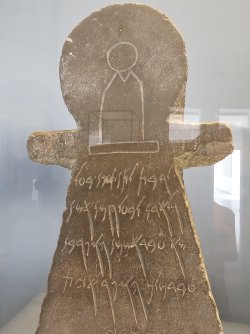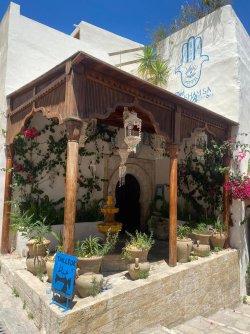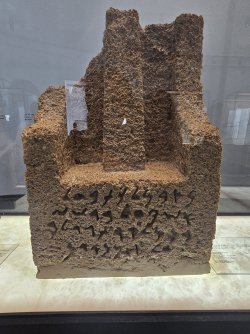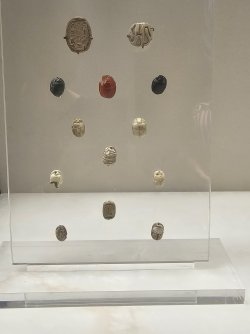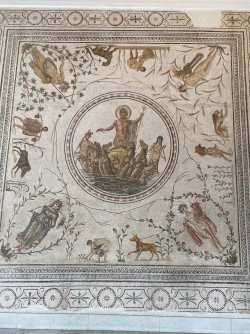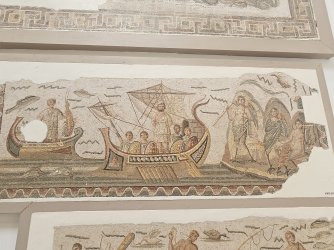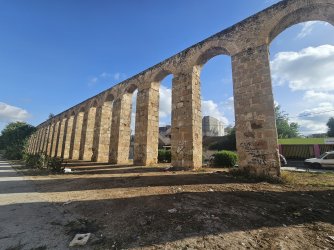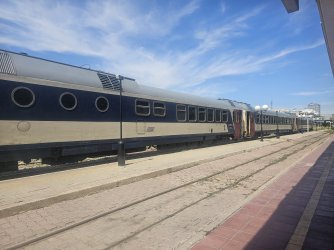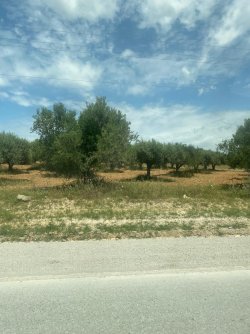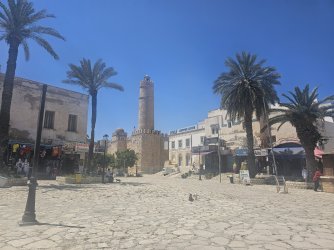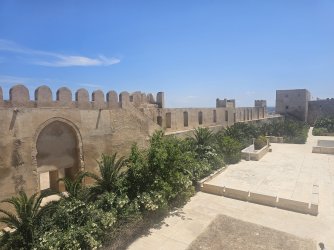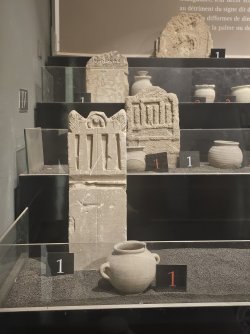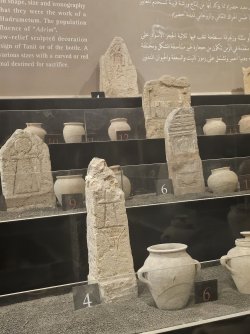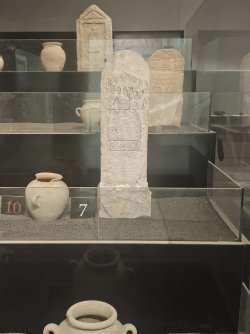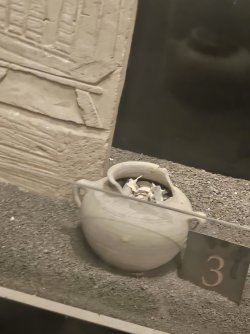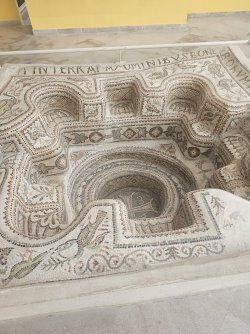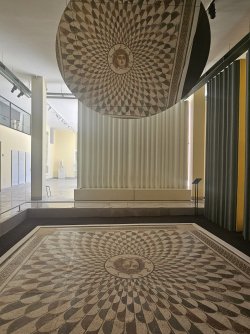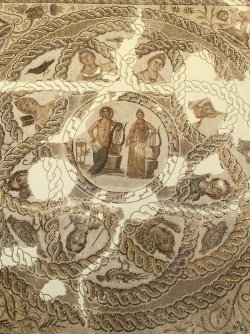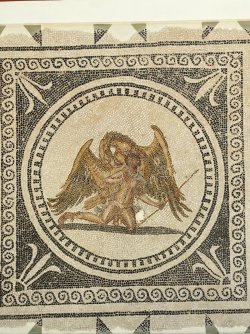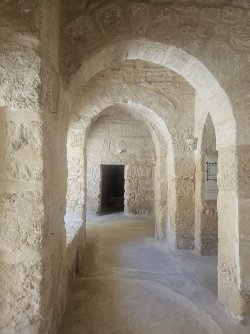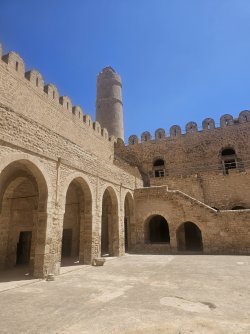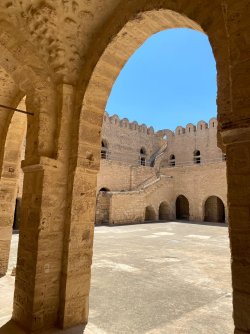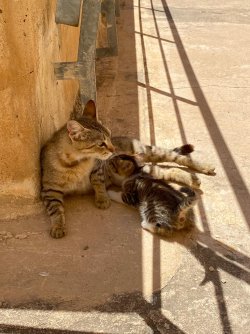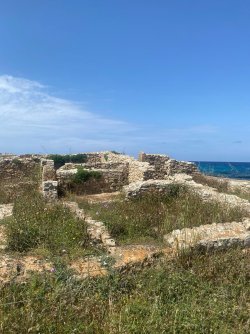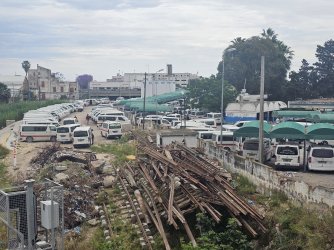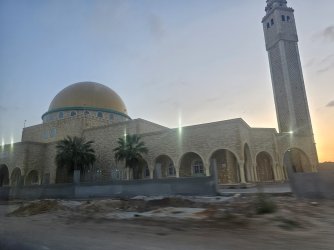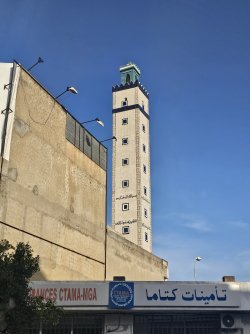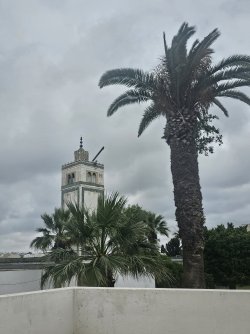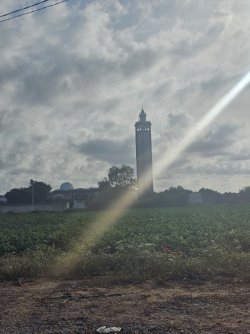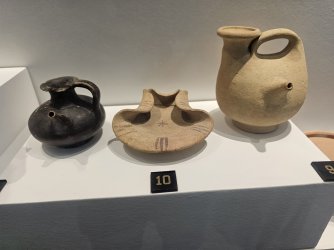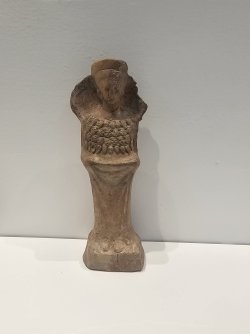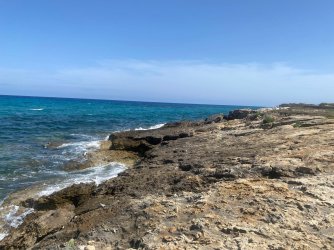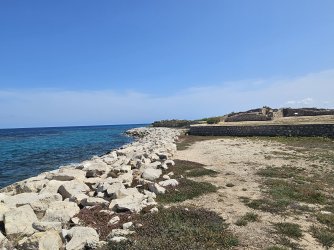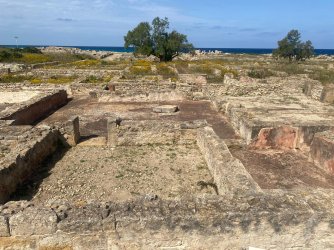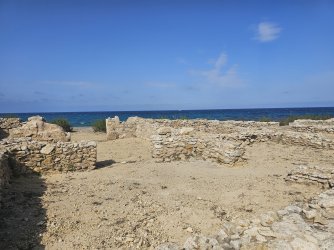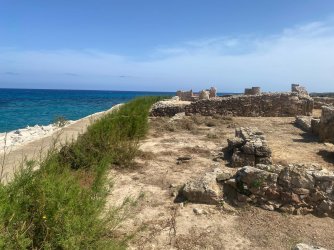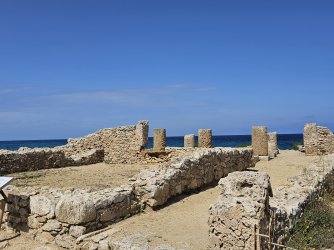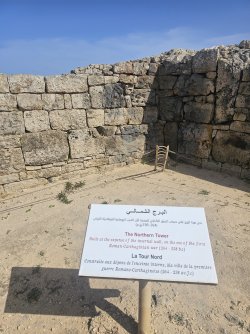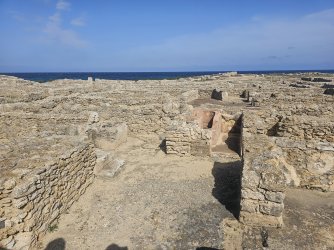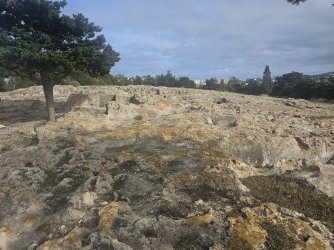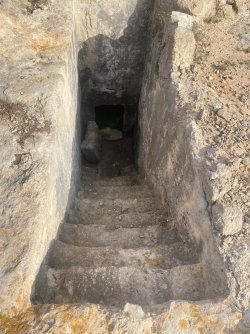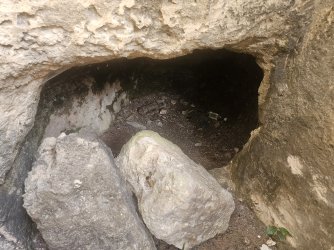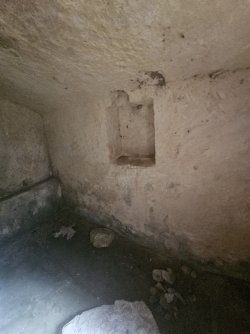- Joined
- Jan 20, 2019
- Posts
- 152
- Virgin
- Gold
Tunis - Sousse - Kerkouane
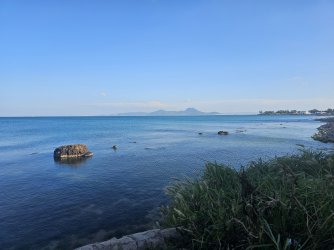
The view across the Gulf of Tunis that one would've had from Carthage
I got 3 weeks' leave in April/May, and given the NHL playoffs were on and I was overdue to see my eye surgeon in Montréal, I decided to take a trip back home. The whole trip belongs in the travel mistakes thread, starting from the extra $1.4k and one day I spent to bypass LAX (after the tariff threats and the comments about the 51st state, I've foresworn Jack Daniels and US lay/stopovers). Then I nearly missed check in, had to scramble for accommodation in Vancouver (!!) after realising at 6 p.m. that I'd forgotten to book anything, and then found out I'd booked my flight to Toronto the day after the Toronto-Florida playoff game I'd bought a $400 ticket to. I also had a job interview I forgot to schedule my travel around. And, I never managed to book in to see my busy surgeon.
To top it all off, after a couple of drunken phone calls to friends which I don't completely remember, I booked a 4-day trip-within-a-trip to Tunis from Montréal, redeeming 75k Qantas points (and $500 in fees) for a RAM business class flight to Tunis via Casablanca and then forked out for a flight back to Montréal. I had to present to ED during that trip so lost the good part of one of those four days.
Tunisia is not a country I'd consider visiting sober, as my interests lie in the post-Soviet sphere. But apart from Russia/the USSR, Carthage was the other part of history class that I didn't fall asleep learning about. I had looked at a map of the Phoenician empire 10 years ago and thought those cities in Lebanon and Tunisia were a long-off dream.
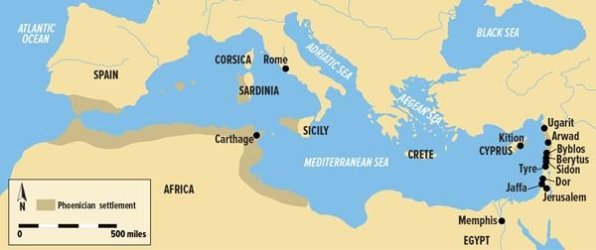
Phoenicia was a nation based out of Tyre (in modern-day Lebanon) that is credited for pioneering maritime trade. They traded all over the Mediterranean and pioneered financial and maritime developments. They built cities along the coast at points that roughly corresponded to how far their ships could travel at that time. One such city was Carthage, founded in 814 BC in what is now Tunis by the Phoenician princess Dido, as legend goes (she would later kill herself on a funeral pyre after her lover the Trojan prince Aeneus leaves her as he's too preoccupied with, I don't know, founding Rome).
Towards the 6th C BC Tyre began to decline and Carthage became an imperial metropole in its own right. It had three wars with Rome over a couple of centuries and while each had a different casus belli one could say that Rome felt threatened by Carthage's power. In the lead-up to the third war, Cato the elder (whose oratorial talents are much extolled in Plutarch) in front of the Senate shook out a fig from his robes and held it up, to symbolise both the moral decay and abundance of the land from which he'd took it, and proclaimed, "Carthage must be destroyed."
For inspiration, I looked to henleybeach's and RooFlyer's trip reports but there's not a lot on AFF on Tunisia. So I thought I'd make this report of my short trip there. It'll be full of whinges, misadventures, musings and inaccuracies probably, but hopefully some useful information for anyone planning to go there. Happy to be corrected or enlightened about anything I write (esp about Carthage or the Arab world). It'll be focused on Punic sites (Punic - related to the Phoenicians) and therefore southern Tunisia won't be touched, however there are a lot of interesting geographical and palaeontological sites (e.g. preserved dinosaur tracks) in the south that would be worth a visit.

The view across the Gulf of Tunis that one would've had from Carthage
I got 3 weeks' leave in April/May, and given the NHL playoffs were on and I was overdue to see my eye surgeon in Montréal, I decided to take a trip back home. The whole trip belongs in the travel mistakes thread, starting from the extra $1.4k and one day I spent to bypass LAX (after the tariff threats and the comments about the 51st state, I've foresworn Jack Daniels and US lay/stopovers). Then I nearly missed check in, had to scramble for accommodation in Vancouver (!!) after realising at 6 p.m. that I'd forgotten to book anything, and then found out I'd booked my flight to Toronto the day after the Toronto-Florida playoff game I'd bought a $400 ticket to. I also had a job interview I forgot to schedule my travel around. And, I never managed to book in to see my busy surgeon.
To top it all off, after a couple of drunken phone calls to friends which I don't completely remember, I booked a 4-day trip-within-a-trip to Tunis from Montréal, redeeming 75k Qantas points (and $500 in fees) for a RAM business class flight to Tunis via Casablanca and then forked out for a flight back to Montréal. I had to present to ED during that trip so lost the good part of one of those four days.
Tunisia is not a country I'd consider visiting sober, as my interests lie in the post-Soviet sphere. But apart from Russia/the USSR, Carthage was the other part of history class that I didn't fall asleep learning about. I had looked at a map of the Phoenician empire 10 years ago and thought those cities in Lebanon and Tunisia were a long-off dream.

Phoenicia was a nation based out of Tyre (in modern-day Lebanon) that is credited for pioneering maritime trade. They traded all over the Mediterranean and pioneered financial and maritime developments. They built cities along the coast at points that roughly corresponded to how far their ships could travel at that time. One such city was Carthage, founded in 814 BC in what is now Tunis by the Phoenician princess Dido, as legend goes (she would later kill herself on a funeral pyre after her lover the Trojan prince Aeneus leaves her as he's too preoccupied with, I don't know, founding Rome).
Towards the 6th C BC Tyre began to decline and Carthage became an imperial metropole in its own right. It had three wars with Rome over a couple of centuries and while each had a different casus belli one could say that Rome felt threatened by Carthage's power. In the lead-up to the third war, Cato the elder (whose oratorial talents are much extolled in Plutarch) in front of the Senate shook out a fig from his robes and held it up, to symbolise both the moral decay and abundance of the land from which he'd took it, and proclaimed, "Carthage must be destroyed."
For inspiration, I looked to henleybeach's and RooFlyer's trip reports but there's not a lot on AFF on Tunisia. So I thought I'd make this report of my short trip there. It'll be full of whinges, misadventures, musings and inaccuracies probably, but hopefully some useful information for anyone planning to go there. Happy to be corrected or enlightened about anything I write (esp about Carthage or the Arab world). It'll be focused on Punic sites (Punic - related to the Phoenicians) and therefore southern Tunisia won't be touched, however there are a lot of interesting geographical and palaeontological sites (e.g. preserved dinosaur tracks) in the south that would be worth a visit.









